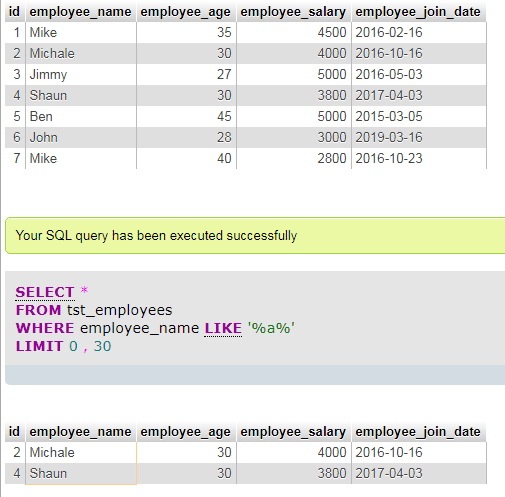

Where clauses can get very complicated if you add several logical conditions. You can also mix and match logic conditions such as using the “or” or “and” keywords. You can one of multiple where clause statements. The where clause is where you filter records. Adding the Not Like Clause to the MySQL StatementĪfter you set up the basic statement, you can add the where clause statement. Need to integrate MySQL into a PHP app? Here’s a good place to start. This includes if you want to return multiple fields from different tables joined together in the MySQL statement. You can generally get away with it when you do one-off queries to quickly look at records, but most database admins will request that you always specify the fields you want to return. It’s generally frowned upon in the programming world to use the asterisk to return all rows. For instance, if you want to query only the first and last name of customers in the customers table, you use the following MySQL syntax: select first_name, last_name from customers You can also specify specific fields in the table.
Mysql like code#
The following code is a simple MySQL statement that retrieves all records from the MySQL table named customers: select * from customers Regardless of how many tables you want to search, the not like statement is in the search phrase’s where clause, which you can set up after you create a basic MySQL statement.Īfter you figure out the tables you want to search, set up a basic MySQL search query. You can search only one table, or you can use a MySQL join statement to search multiple records that “connect” to each other between each table. The first step in creating a MySQL not like statement is first determining what tables you want to search. The not like statement is not used as much as other statements, but it’s used to filter out records after they have been retrieved from the database tables. When you’re learning the MySQL language, there are certain where clauses you need to know, and the “not like” statement is used enough where it should be a part of your common MySQL query statement knowledge. The not like statement is different from the equals statement, because the equals statement requires that you enter an exact value found in the MySQL table field. The advantage of using the like statement is that you can use wildcards, so you can search for a range of values or values that match a pattern.

It searches records that do not match the value in the not like clause. The not like statement does exactly what it sounds like it does. To find out what else this language can do, you might want some MySQL Training for Beginners. The advantage is that you can find records that you need to edit or report on a spreadsheet.

The feature is essentially the opposite of find a list of matching values, which means you can get two recordsets: a recordset with matching values and ones that do not have the values.

However, the MySQL programming language also has a way to find records that do not match a specific value. When developers think of searching records in a database, they often think of finding matching values whether they are numerical, calculated values or a matching string of characters.


 0 kommentar(er)
0 kommentar(er)
